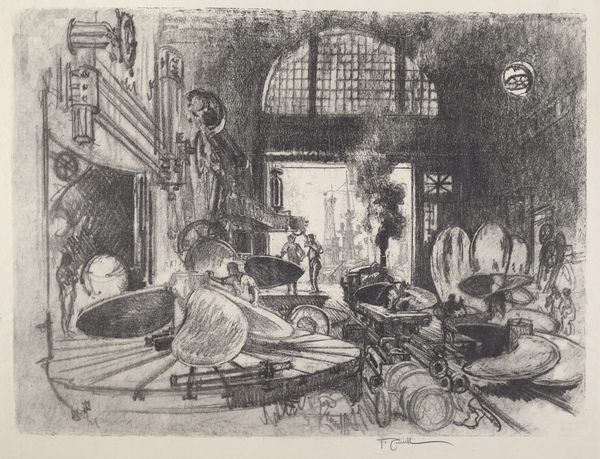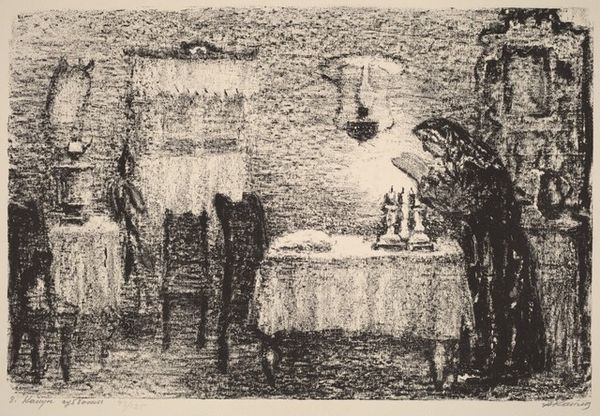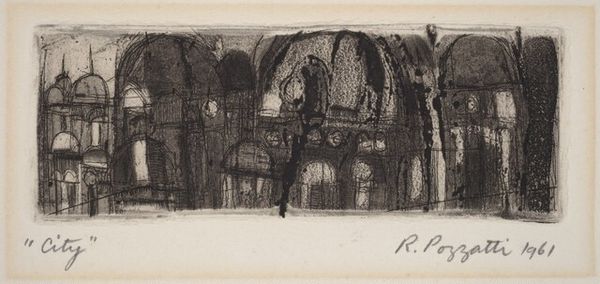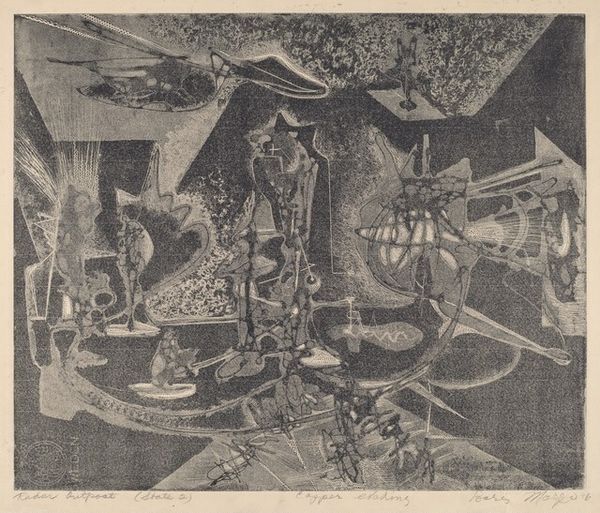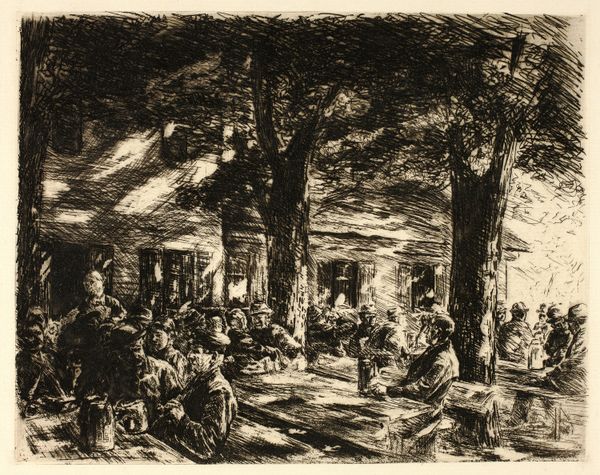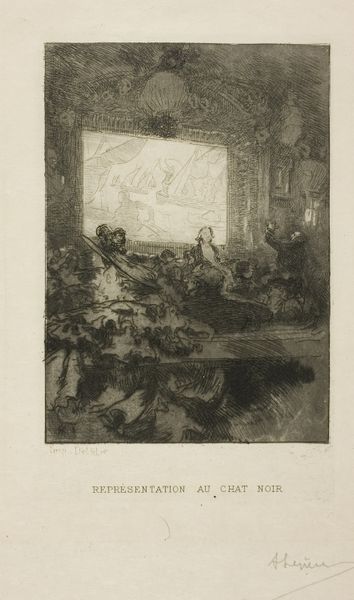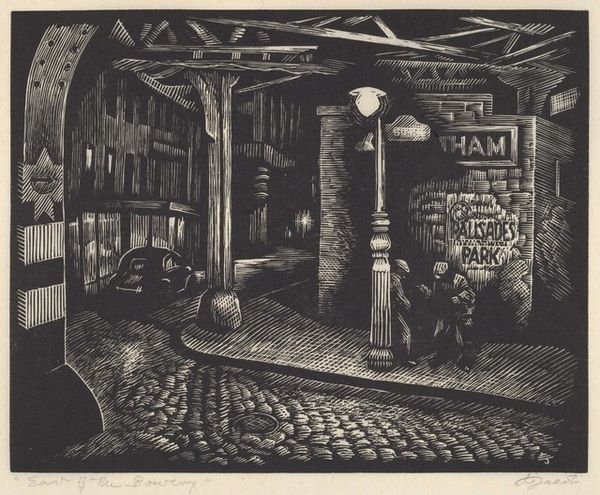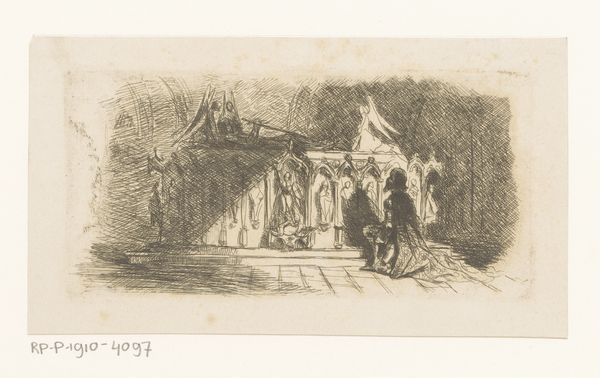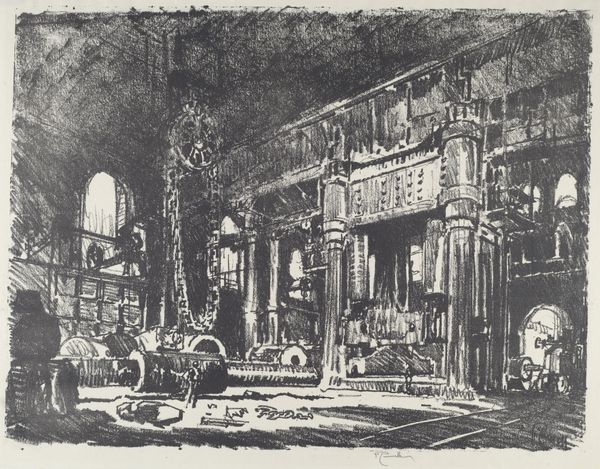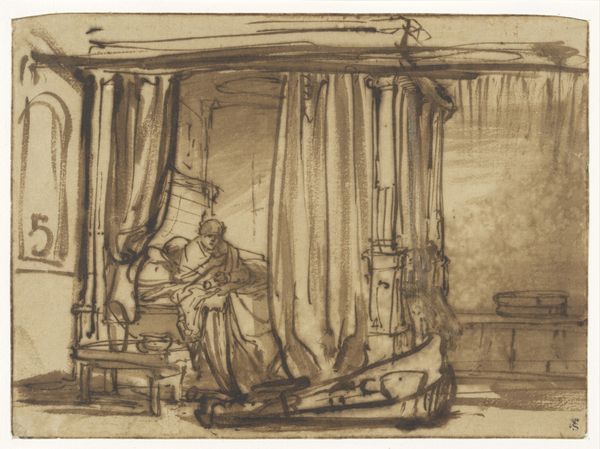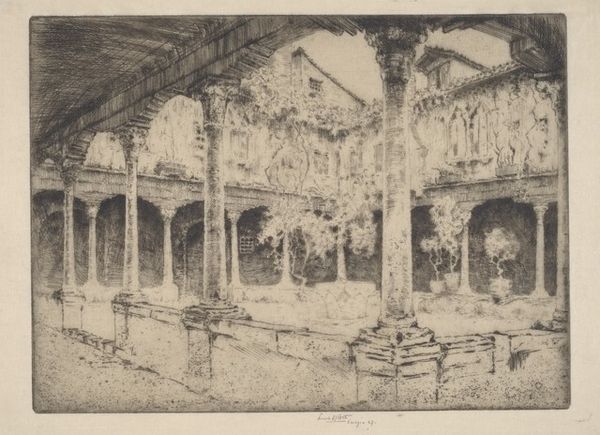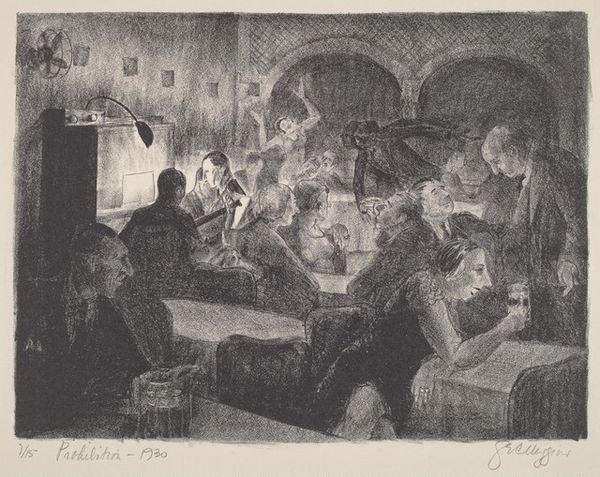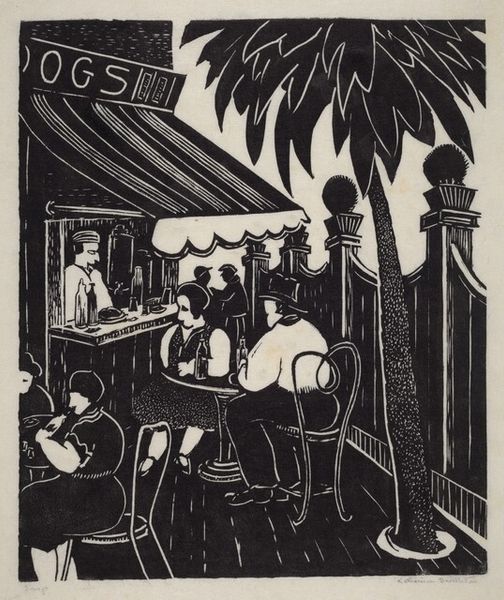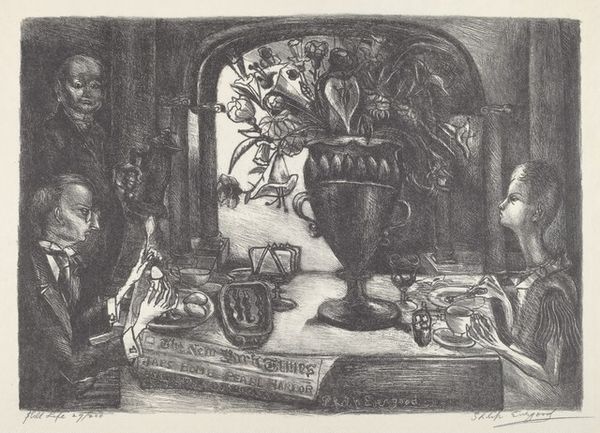
Dimensions: block: 221 x 267 mm sheet: 268 x 329 mm
Copyright: National Gallery of Art: CC0 1.0
Curator: What we're looking at is "Lagunilla Market, Mexico City," a woodcut print by Charles A. Wilimovsky, dating from around 1937. Editor: It strikes me as a very visually complex image. The stark contrast and strong lines create an atmosphere that feels both lively and a bit oppressive, like a humid afternoon just before a downpour. Curator: The visual dynamic you’re picking up on is due to Wilimovsky's skillful manipulation of positive and negative space. Notice how the bustling market scene is defined by sharp, graphic cuts. Editor: It reminds me a bit of the Taller de Gráfica Popular and their artistic commitment to leftist politics. Was Wilimovsky affiliated with those muralist movements that captured so much attention at that time? Curator: Though stylistically it shares some affinities, there’s little evidence suggesting direct affiliation with groups such as TGP. Still, the artwork is exemplary, in that the deep shadows emphasize the vitality of everyday Mexican life, its cultural roots. The use of the woodcut medium allows for striking social commentary through this depiction. Editor: The figures seem both individualized and somewhat anonymous. What effect do you think the graphic nature of the print medium has on our understanding of these people in their daily lives, at market? Curator: The rigid black-and-white limitations paradoxically amplify the liveliness. Through clever use of the negative spaces he directs our eyes across the marketplace and captures fleeting impressions. Editor: So it becomes less about individuality, then, and more about capturing the collective experience of market day. Considering that this was made in the late 1930s, the political climate would inevitably be part of the reception. Curator: Precisely. And through the interplay of shadow and light, Wilimovsky isn't simply documenting, he’s shaping our perspective, drawing us into the heart of the market and implicating us in the life of the community. Editor: I’m leaving here contemplating the delicate dance between the aesthetic qualities of this woodcut and the potent echoes of history embedded in it. Curator: For me, it's about recognizing how Wilimovsky masterfully exploits the tension inherent in black-and-white contrast, turning it into a vibrant testament to human experience.
Comments
No comments
Be the first to comment and join the conversation on the ultimate creative platform.
